Brothers Nick, Jeremy and Chris Oldland continue to honor their mother’s artistic expressions and family-first approach to business, both in their operations and the design of happy, sustainable clothing for children.
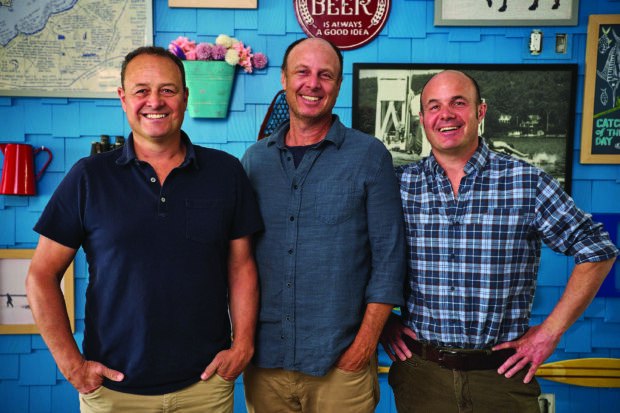
From left: Chris, Nick and Jeremy Oldland
It all started in 1986 with matriarch Alice Oldland, a talented artist who handpainted whimsical animals on aprons that she sold with her husband, John, out of their little gift shop in North Hatley, Quebec. In 1999, the parents were ready to retire to England and handed their manufacturing company to their three sons, Nick, Jeremy and Chris.
Nick recalls in the company’s video story on their website that, “My parents literally gave us the keys and said, ‘Don’t call.’’ Nick inherited the drawing gene from his mother, so he became the new creative force behind Hatley.
Nearly 25 years later, Hatley still maintains itself as a children’s art house of sorts, with original prints driving its collections. The company has more than 450 accounts in 25 countries and its categories comprise apparel for baby, girls, boys, and women as well as sleepwear, swimwear and rainwear for the younger set. This year will see the expansion of Hatley outerwear.
With 300 employees, including six graphic designers and 12 garment designers, the company still adheres to its illustrative roots, seeking inspiration in nature and staying true to Alice’s original art aesthetic. Hatley has never rested on its laurels, which is why is continues to reach new heights of success every season and every year. Earnshaw’s spoke to Senior Designer Blair Leroux about the creative process and the Oldland brothers about how they have stayed competitive, practice sustainability, ecommerce challenges, and their passion for giving back to the community and the global manufacturing world.
Earnshaw’s: What’s the role of each of the Oldland brothers?
Nick: The company is run by the three of us in three basic silos. I do creative, Chris handles sales and Jeremy handles operations. Over the last 20 years, each one of our roles has changed as we grew, but the basic themes of our roles have stayed the same and complement each of our abilities.
Earnshaw’s: What was the progression of the collections?
Chris: Our first children’s catalog in 2005 featured four rainwear programs and six pajama prints. Our rainwear at the time was unique, since it featured original prints produced by Nick’s team, and it opened a lot of doors for us. From there, our customers and sales representatives would give us feedback and ideas, and the line evolved to the point where our apparel has drawn level with our rainwear, pajamas and swimwear.
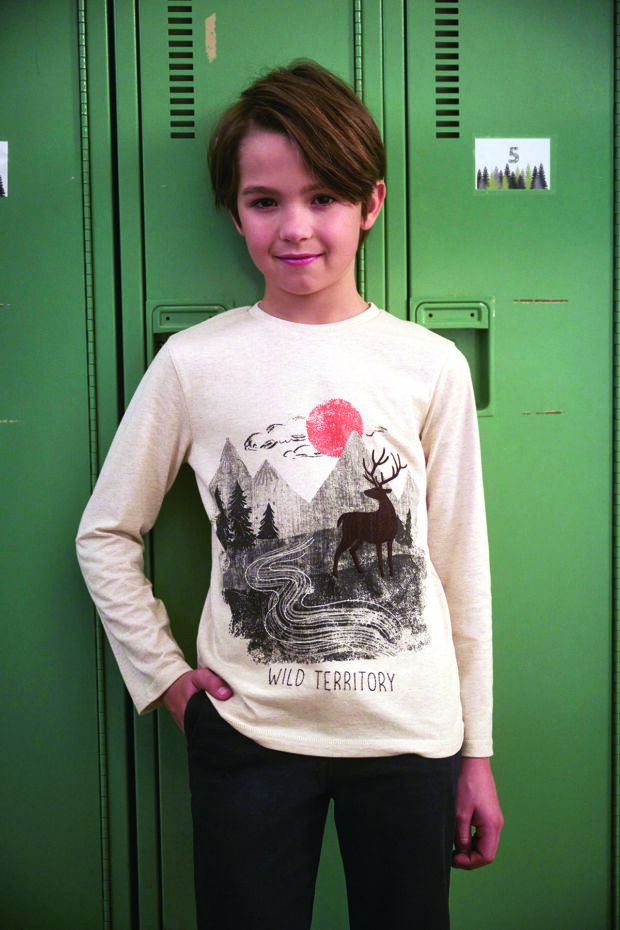
A Hatley original design
Earnshaw’s: What’s the creative process behind the prints and color schemes for an upcoming season?
Blair Leroux: The creative process for all seasons is through an engagement with life. Even when I’m not sitting at my desk or drawing, I’m watching what is going on around me, and what my kids are doing to inspire a print or concept. It’s a constant journey of finding elements of my life that get pieced together to make a print or an overarching theme of the season. Subconsciously, there is an absorption of what is happening with color from the market, but I never look at trend forecasting. Instead, I let the prints and themes dictate the colors.
The fabrics that we are using will often lend themselves to specific colors and I trust my gut. There’s also an awful lot of ‘can all these garments look good together in a store,’ and most importantly, crammed in my kids closet and dresser—most likely, they are going to dress themselves and if it all sort of looks good together, they can’t pick something offensive to wear.
I like to always think of Hatley as a brand that is family-friendly, and something that will make people happy and think. It could be something as silly as the way we draw a car and think, ‘How does my son Emmitt see this car? Where would my daughter Fiona want this rainbow to go on this unicorn?’
Earnshaw’s: When did you start to sell online and what has been the ups and downs of e-commerce?
Jeremy: We launched our first website in 2007 and have achieved consistent growth except for 2022. The initial goal was to take control of our brand’s image online. We knew we had to do something when we would search Hatley and the top results were listings of our product on Ebay. During the height of Covid, the website really helped us stay open but post-Covid, we have seen a real return to brick-and-mortar shopping which has resulted in our first decrease in e-commerce sales. We have also opened more than 30 stores and between those and the website, it accounts for nearly 50% of our revenue. By being our own biggest customer, we try a lot of new products and take risks that we probably couldn’t take without them.
Earnshaw’s: What have been the highlights of your careers at Hatley?
Nick: The day I was no longer responsible for drawing ALL the prints.
Chris: Opening 30+ stores in Canada the US and UK.
Jeremy: Setting up our logistics center in Montreal and establishing a supply chain in India that matches our family values in Canada.
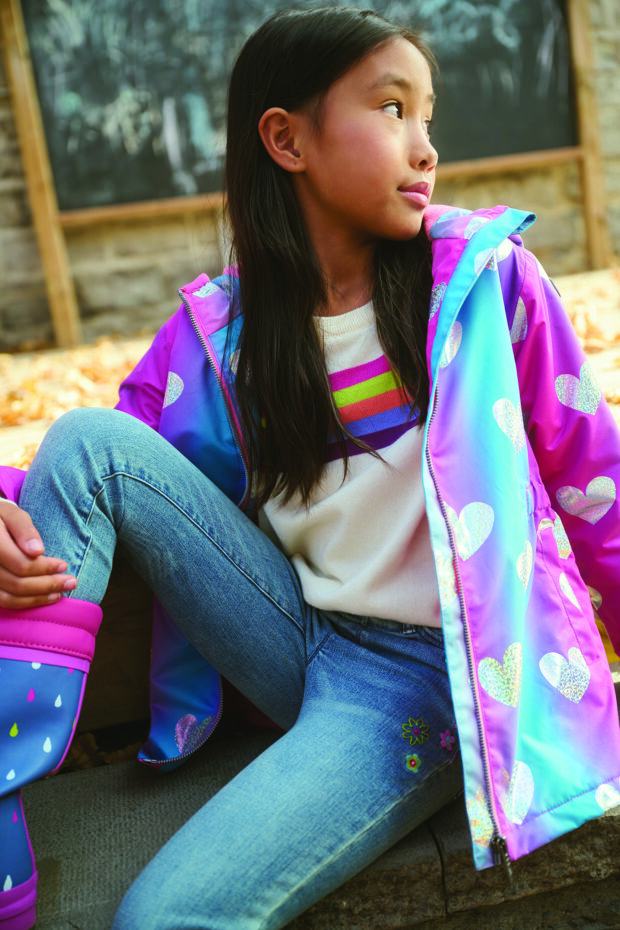
As one of the first two categories for Hatley, rainwear remains an adorably strong seller.
Earnshaw’s: What has been the most challenging part of running the business and why?
Nick: When we started, I was the only designer. I drew the prints, designed the garments and created all of marketing materials. There a came a point when I was simply unable to do it all. The day I started hiring designers, I was able to accomplish much more but and my job evolved into the role of Creative Director. The transition from doing the work to telling people what to do became the single-most challenging period in my career. Trying to communicate a concept that lives in my head and seems so clear and easy to execute is no small challenge. Today, as much as I’d love to execute the odd design, the designers who work for me now are significantly better than I ever was.
Chris: In the early 2000’s we were primarily selling pajamas and gifts to the general gift and resort market. Several competitors started copying our designs and approaching our customers with lower prices. The expense of pursuing them in court was too high, so we completely changed our business. We grew our team of illustrators and designers to make sure we were always showing something new every six months. We created Hatley Kids and a few years later Hatley Women’s. We moved production overseas to become more competitive and started opening stores. This was a group effort well beyond the three of us and the team that helped us through that challenge also got us through Covid.
Jeremy: Ensuring consistent quality from our factories. It is often very tempting to take the cheapest price from a factory, and only after years of experience to do you understand the old saying: “You get what you pay for.” Not only is price important, but you need to have confidence in the people you are working with. Hatley is a family-run business with high ethical standards, so we only work with factories that we personally inspect, and ideally, it’s a family-run operation. Each time I place a PO, I consider it an investment in a long-term relationship. We have seen many of our factories change hands from parent to child, and it reminds of the kind of factories we invest in. I think this has paid off, because our factories get to know what we want, and it takes a lot of the guesswork out of manufacturing overseas.
Earnshaw’s: How have supply-chain disruptions affected the business?
Nick: 2021 was an incredibly challenging environment, but our factories performed surprisingly well. Because we had maintained such solid relationships, our factories always put Hatley orders first. We wound up having to switch from ocean to air shipping, and we were able to buy our way out of the worst of the delays.
Earnshaw’s: What are some of the standouts for FW 2023?
Nick: Our girls’ apparel, particularly the dresses, have gotten better each year—we have some very special pieces this fall. This will be our second year offering a fun line of winter outerwear that we think is awesome. This year we started making specific pieces for newborns and clarifying that our toddler line is for preschoolers and our kids’ line is for elementary school-aged kids. In the past, this could get kind of muddled together with the overlap in sizes, but I think we did a much better job of separating the three age ranges. We’ve also added bamboo to our sleepwear assortment.
Earnshaw’s: What changes have you seen over the past five years in the industry?
Jeremy: Safety. All governments have increased their vigilance with respect to safety issues and I am happy to say our existing internal standards have always exceeded the government expectations. Where we see issues, though is increased occurrence of safety inspections. This is a problem, because each time there is an inspection a regulator will hold a shipment for up to two weeks in order to perform the necessary tests, but we always pass!
Chris: Sustainability and emphasis on clothes having a second, third or fourth life. We were one of the first companies to put extra space on our tags for the second and third kids to write their names into it, and we see how our clothes stay active in the world of resale. We decided long ago that the best thing we can do for the environment is make clothes that last.
Nick: The desire for more “special” pieces. The last few seasons, some of our best selling items have been our most expensive “bold” pieces. It might have something to do with social media, but parents seem to be placing greater emphasis on their kids looking sharp. Our goal has always been to make clothes that kids will want to wear because they are comfortable and fun, but at the same time parents will appreciate that the colors and combinations just look good together.
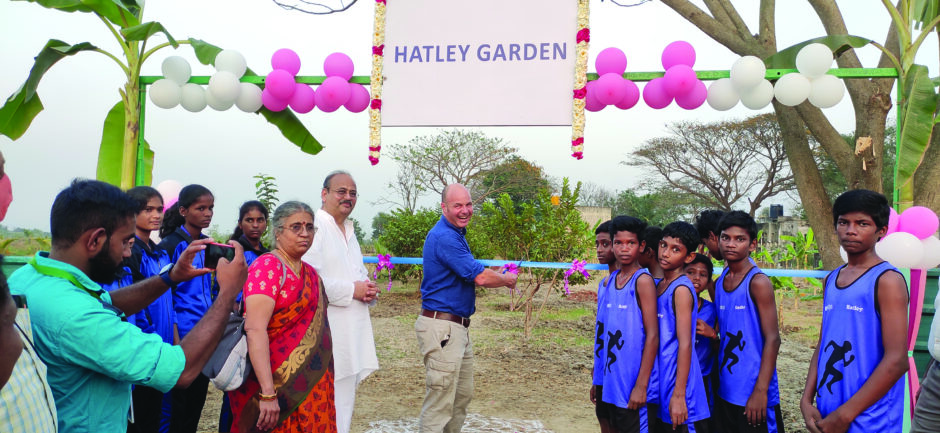
Hatley’s partnership with India-based charity Sevalaya paved the way for a robust tree-planting effort.
Earnshaw’s: Explain your partnership with Sevalaya and what the company’s contributions have been able to make happen for this non-profit.
Jeremy: We often get asked to donate and partner with different organizations, but it is important for us to chose ones that reflect our values, which I have whittled down to three factors: where we are from, who do we serve as customers and where do we manufacture.
Since this company was founded In North Hatley on the shores of Lake Massawippi, we have been supporting the Bleu Massawippi project to keep our lake clean for the past 15 years. Since our customers are children, For the last 10 years, we have been supporting the Montreal Children’s Hospital. In the last two years we launched the Pajama Project where in the month of October we donate a pair of pajamas for every one bought on our website or in our retail stores. This year we gave away 7,000 pairs to eight charities in Canada, the U.S. and the UK. Since we manufacture in India, we have partnered with an orphanage there to support the local communities nearest to our factories for over 10 years. Our first big project was contributing to building a track and field pitch where the children could compete and practice. This year we planted 3,000 trees, 1,000 of them being fruit trees and we have supported the university educations of many kids.
Earnshaw’s: What’s the best piece of professional or personal advice each one of you has received?
Chris: Trust your team and be comfortable working with people smarter than you.
Nick: Give clear direction and accept that only about 50% of what you think you said was actually understood.
Jeremy: Own your mistake and don’t blame others when they make one.
Earnshaw’s: What advice do you have for other childrenswear companies who are starting out?
Chris: Work hard and be patient. It takes time for the market to see the value of your product. Retailers want to see that you can consistently deliver and are going to be in business for the long run.
Earnshaw’s: What are the top three concepts about Hatley that you want the childrenswear industry to know?
Chris: Hatley is more than three brothers. We are part of a hardworking team spread across three countries. We have wives, husbands, children, relatives, and friends who wear our clothing every day. They let us know when we’ve done something right or wrong. We are proud of every collection we bring to market because we know those around us will be wearing it to every day activities as well as special occasions. We love what we do and feel like we are just getting started. There are so many paths to take with children’s fashion and we plan on taking all of them.
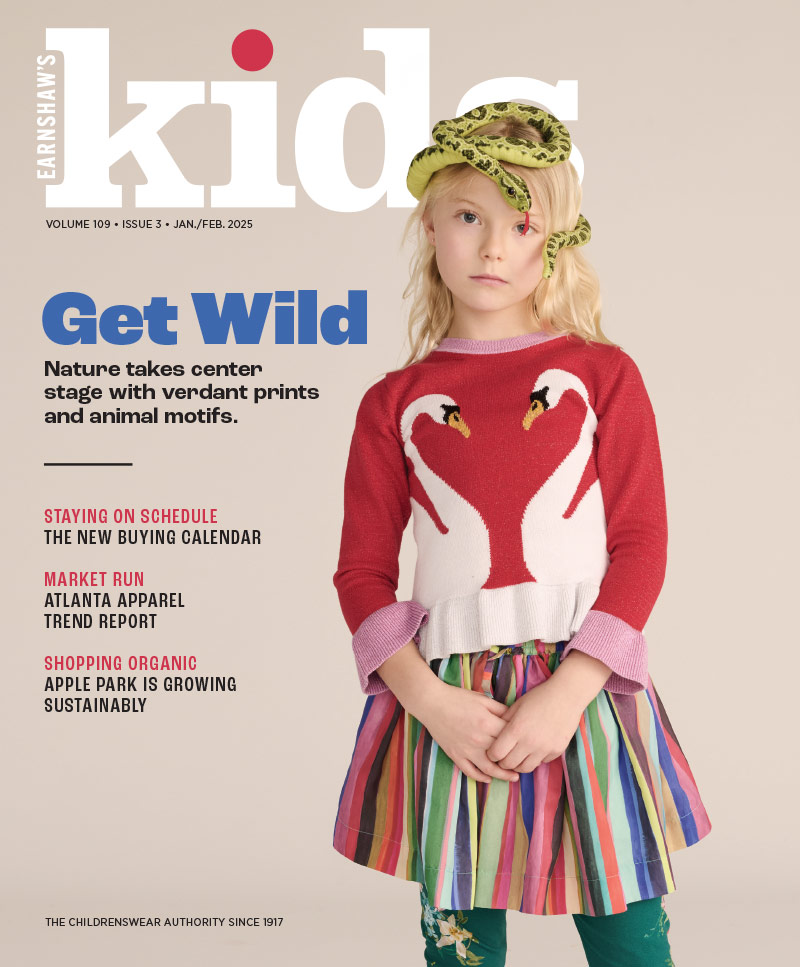

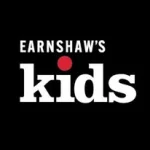

 From milestones to everyday magic, @ryleeandc
From milestones to everyday magic, @ryleeandc

 BEST IN SHOW: @milaandrose
Twirl-worthy, pla
BEST IN SHOW: @milaandrose
Twirl-worthy, pla





 This season’s
This season’s

 We had an i
We had an i


 Make Your Message Unmissable in 2025!
Get ahea
Make Your Message Unmissable in 2025!
Get ahea





 F
F



Leave a Comment: